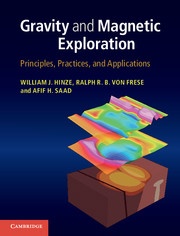Preface
Published online by Cambridge University Press: 05 May 2013
Summary
Objectives of this book
Investigations of terrestrial gravity and magnetic fields are among the oldest methods for determining the nature and processes of the Earth. Despite the development of an increasing number of additional complementary investigative methods, some of which have better subsurface resolution, the gravity and magnetic methods continue to have an important, often decisive role, in a wide variety of terrestrial investigations. In contrast to the several available texts on specific topics in gravity and magnetics, this book provides an overall, modern resource on the principles, practices, and applications of both the gravity and magnetic methods to exploring the Earth. Although these aspects of the gravity and magnetic methods are well grounded in widely described and accepted principles, they are continually undergoing practical improvements and expanded understanding. The continued improvements result from enhanced technology for acquiring, processing, and interpreting data made possible largely by increasing computational power and new techniques. Special emphasis in gravity and magnetic exploration is being placed on high sensitivity mapping of anomalies at the extremities of their spectra, both shorter and longer wave-lengths, increasing the vertical and horizontal resolution of individual anomaly sources, and investigating the temporal variations in the gravity and magnetic fields of the Earth which permit new insights into Earth processes. It is hoped that this book which sets a benchmark in our current knowledge of gravity and magnetic exploration will encourage further developments in these methods and applications.
- Type
- Chapter
- Information
- Gravity and Magnetic ExplorationPrinciples, Practices, and Applications, pp. xi - xiiiPublisher: Cambridge University PressPrint publication year: 2013



